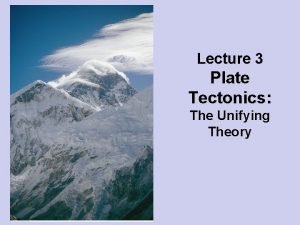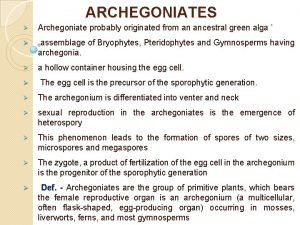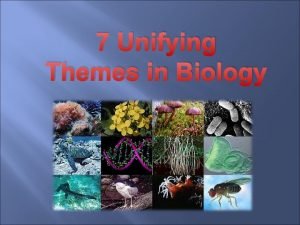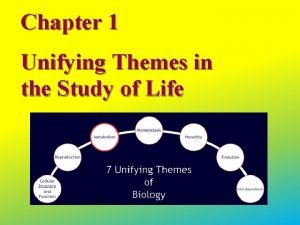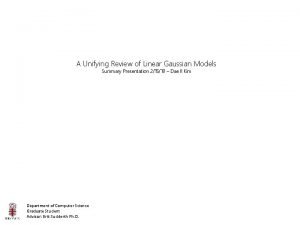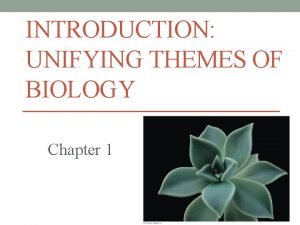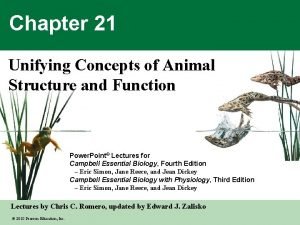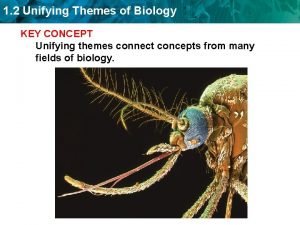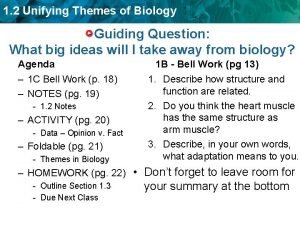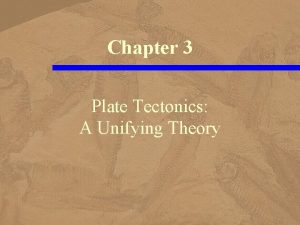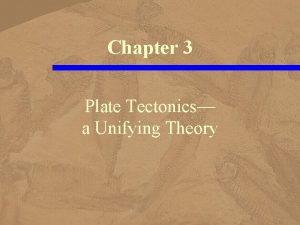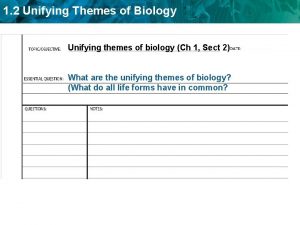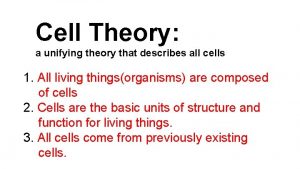Evolution Everywhere Evolution as the unifying theory of









- Slides: 9

Evolution Everywhere Evolution as the unifying theory of biology

Unit 5: Evolution

Unit 1: The Nature of Life • Standards – Writing and Literacy Standards for Science (2010) 9 -10. RS. 8 Assess the extent to which the reasoning and evidence in a text support the author’s claim or a recommendation for solving a scientific problem. 9 -10. WS. 1 Write arguments focused on discipline-specific content. – Nature of Science Standards No. S. 1 Develop explanations based on reproducible data and observations gathered during laboratory investigations. No. S. 2 Recognize that their explanations must be based both on their data and other known information from investigations of others. No. S. 8 Explain that the body of scientific knowledge is organized into major theories, which are derived from and supported by the results of many experiments, and allow us to make testable predictions.

Unit 1 Activity • “Jigsaw Conference” – Students will read and become experts on one type of evidence for or against Darwin’s theory of evolution. – Students will decide, based on their knowledge of the Nature of Science, whether their piece of evidence is scientifically sound. – Students will justify their decision to their peers.

Resources For Anatomy, Molecular, and Fossil Evidence: – http: //www. pbs. org/wgbh/evolution/educators/l essons/lesson 3/act 2. html – http: //www. zoology. ubc. ca/~bio 336/Bio 336/Le ctures/Lecture 5/Overheads. html • The first link was produced by PBS specifically for educators. • The second comes from the zoology department at the University of British Columbia, Canada.

Unit 2: Ecology

Unit 3: Cells • Standards – Writing and Literacy Standards: 9 -10. WS. 1 Write arguments focused on discipline-specific content. 9 -10. WS. 4 Produce clear and coherent writing in which the development, organization, and style are appropriate to task, purpose, and audience. – Cells Standards B. 2. 1 Describe features common to all cells that are essential for growth and survival. Explain their function. B. 2. 4 Explain that all cells contain ribosomes (the key sites for protein synthesis), where genetic material is decoded in order to form unique proteins. B. 2. 5 Explain that cells use proteins to form structures (e. g. , cilia, flagella), which allow them to carry out specific functions (e. g. , movement, adhesion and absorption). B. 2. 6 Investigate a variety of different cell types and relate the proportion of different organelles within these cells to their functions.

Unit 3 Activity • “The Root of Rudolph Virchow” – Students will use their knowledge of cell structure and organelle functions to create drawings or models of what they believe the very first cell looked like and how it functioned. – Students will present their models to their peers and justify why they designed it the way they did. – Students will compare their models to what modern cytologists theorize the first cells may have looked like.

Unit 4: Genetics
 Everywhere you go everywhere you look
Everywhere you go everywhere you look Types of plate boundaries
Types of plate boundaries Unifying features of archegoniate
Unifying features of archegoniate 5 themes of biology
5 themes of biology The biological hierarchy
The biological hierarchy A unifying review of linear gaussian models
A unifying review of linear gaussian models 5 unifying themes of biology
5 unifying themes of biology Unifying concepts of animal structure and function
Unifying concepts of animal structure and function 5 themes of biology
5 themes of biology Unifying theme definition
Unifying theme definition

